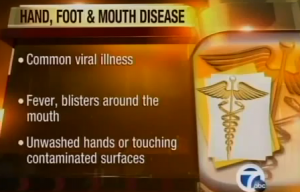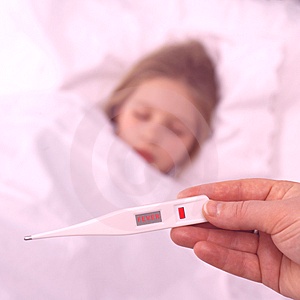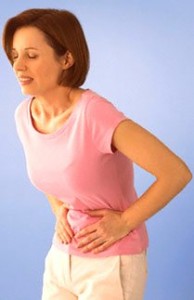HFMD or hand, foot and mouth disease is a mild infection but a contagious disease which is usually caused by viruses from the Picornaviridae family. It is characterized by mild fever and followed by typical rash that mostly occurs in the inside of the mouth, palms of the hands, and soles in the feet. At times, this type of disease is mostly confused with the foot and mouth disease that forms in animals. But this is not so as they are caused by two completely different viruses. Humans cannot get this animal disease in any way or form; likewise, animals cannot have the human disease.
Signs and Symptoms of Hand, Foot and Mouth Disease
Signs and symptoms include:
• Fever
• Headache
• Fatigue
• Vomiting
• Sore throat
• Malaise
• Ear pain
• Non-itchy body rash
• Loss of appetite
• Oral ulcer
• Diarrhea
A typical HFMD usually begins with a mild fever especially during the first two days of the infection. This is followed by loss of appetite and malaise or the feeling of being unwell. Next is the appearance of flat or raised non-itchy rashes that usually appear at the hand, feet or mouth of the infected person.
Causes of Hand, Foot and Mouth Disease
The most common cause of hand, foot and mouth disease is the infection brought by Coxsackievirus A16. Coxsackievirus A16 is a virus that belongs to the Non-polio Enteroviruses. The main of source of the Coxsackievirus infection is oral ingestion. This illness can easily spread through contact of saliva, nose and throat discharges, stools, and fluids from the blisters on an infected person.
This infection is quite common in infants and children under 10 years old and seldom occurs in adult. Outbreaks easily spread around the school premises most especially during the summer and the autumn months.
Risk Factors for Hand, Foot and Mouth Disease
Children below 10 years old are at high risk of developing such type of disease and places like day care centers and kindergarten schools are the most susceptible places for outbreaks. And as for adults, they can easily be infected if they have weak immune systems.
Hand, Foot and Mouth Disease in Adults
Hand, Foot and Mouth disease in adults is not so common as it is in children but people with immune problems are prone to contracting the disease. Adults have lesser chances of contracting HDMD because their body has more antibodies compared to those of children. Due to previous exposure, adults may have antibodies strong enough to prevent the disease.
Hand, Foot and Mouth disease can spread through contact with saliva, nasal discharge, feces etc. An adult is more likely than a child, generally, to practice proper hygiene practices, compared to children under 11 years of age, which means there is risk for an adult to get hand, foot and mouth diseae. Having said that, both adults and children should practice proper hygiene practices, wash their hands regularly and make sure that they take care of not contracting while handling the mobile phone, door knob, sitting in the loo, touching window sills of trains, buses in public transport and such other areas where germs may thrive.
Hand, Foot and Mouth Disease and Pregnancy
Though HFMD can spread during pregnancy, the risk is quite low. The chances of hand, foot and mouth disease causing miscarriage in pregnancy is also quite rare. Though the baby has no risk usually, if the mother has the disease, there is a chance of Hand, Foot and Mouth disease passing to the baby, if the mother contracts the virus shortly before giving birth. Even if the babies do get the disease, the symptoms may be mild with risk of being complicated in rare scenarios. So to be on the safe side, if you contract rash during pregnancy or any of the symptoms of Hand Food and Mouth disease which gives room for doubt, just let your doctor know.
As a recommended hygiene practice to prevent Hand, Foot and Mouth Disease during pregnancy, wash your hands properly with hot water and soap or sanitizer after going to the toilet, or if you handle a seemingly dirty or germ-infested object. Keep the toilet clean, wash your hands with soap and hot water after handling nappies, and avoid contact with children who may have the disease. Also note that children may have Hand, Foot and Mouth disease, but still not exhibit any symptom.
Hand, Foot and Mouth Disease Complications
Complications rarely occur on a HFMD patient but when these happen, these may range from mild to serious types of diseases such as viral meningitis, dehydration, encephalitis (swelling of the brain), polio-like paralysis (which rarely occurs), and in some instances though not yet proven, infection in children may result to nail loss.
Test and Diagnosis for HFMD
Doctors or health care providers can easily evaluate a person if he/she has hand, foot and mouth disease through his/her age, pattern of the signs and symptoms, and appearance of the rashes. Doctors may also get swabs or collect stools to help determine the virus that caused such disease. However, this is not necessary for a HFMD patient.
Hand, Food and Mouth Disease Treatment
As of this day, no specific treatment has been issued towards HFMD but treatments are usually targeted to relieve the symptoms that occur. Also, it is imperative that dehydration be prevented, thus, enough intake of fluids should be maintained.
Prevention
Kids typically put anything in their mouths that’s why they easily got infected. Utmost supervision is advised and proper hygienic practices such as frequent washing of hands and keeping surfaces and toys clean and disinfected are recommended. Most importantly, avoiding close contact with people with HFMD is necessary. For those who already have hand, foot and mouth disease, they should isolate themselves away from other others for at least a week to avoid outbreak.


